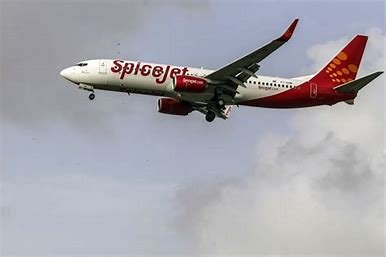
The United Arab Emirates has completed its first-ever successful test flights of High-Altitude Pseudo-Satellites (HAPS), marking a significant milestone in the country’s efforts to become a global leader in advanced aerospace technologies. The HAPS flights, carried out in the UAE’s desert regions, offer groundbreaking potential for long-duration aerial monitoring, communication, and surveillance operations at high altitudes, a capability that could revolutionize industries ranging from agriculture to national security.
HAPS platforms, flying at altitudes above 20 kilometers, operate in the stratosphere, well above conventional aircraft but below traditional satellites. This unique positioning allows them to remain aloft for extended periods, using solar power to conduct real-time, high-resolution monitoring of large areas without the need for constant refueling or maintenance. The UAE’s success in launching these flights is part of its broader agenda to foster innovation in aerospace, telecommunications, and renewable energy sectors, and it has already attracted attention from global tech companies and governments alike.
The UAE government, in partnership with several private aerospace firms, has prioritized the development of HAPS technology as part of its Vision 2030 strategy. This strategy aims to diversify the country’s economy by reducing its dependence on oil and investing heavily in futuristic technologies. The collaboration with leading international firms has accelerated the development of HAPS, positioning the UAE as a regional leader in both aerospace innovation and sustainability.
The success of these test flights is seen as a critical step forward in advancing the UAE’s space ambitions, especially as HAPS technology is recognized by the World Economic Forum as one of the top ten emerging technologies globally. The flights could enable continuous Earth surface monitoring for environmental data collection, disaster management, and even telecommunications enhancement, with far-reaching implications for both the public and private sectors. By providing uninterrupted connectivity in remote and underserved areas, HAPS could transform how data is gathered and distributed in real time across the globe.
Given the strategic location of the UAE and its emphasis on technological innovation, the country’s interest in HAPS platforms is not surprising. The ability of HAPS to operate for weeks or even months at a time without the need for human intervention makes them ideal for remote sensing, agricultural management, and border surveillance, offering significant economic and security benefits. With the increasing demand for data, especially for climate monitoring and environmental protection, HAPS platforms offer a cost-effective and environmentally sustainable solution compared to traditional satellite or aerial monitoring systems.
Government officials in the UAE have emphasized that the success of these flights represents only the beginning of their ambitions. Long-term goals include developing and manufacturing these HAPS systems within the UAE, creating a domestic industry capable of producing next-generation aerospace technologies. This could create new opportunities for partnerships with international tech firms while also building homegrown talent in aerospace engineering and related fields. By establishing itself as a key player in the global HAPS market, the UAE hopes to not only generate revenue but also enhance its global influence in technological innovation.
Moreover, the potential environmental benefits of HAPS are considerable. Their solar-powered capabilities mean that they can function without producing emissions, offering a green alternative to traditional aircraft and satellites. The deployment of HAPS in disaster-prone regions could also prove invaluable, providing real-time data to assist in relief efforts following natural catastrophes such as floods, earthquakes, or hurricanes. The UAE’s investment in this technology could position the country as a global leader in disaster management solutions.
Analysts believe that the UAE’s success with HAPS is a sign of its broader commitment to becoming a technological hub in the Middle East, leveraging its financial resources and geopolitical position to lead in fields such as aerospace, renewable energy, and artificial intelligence. The growing importance of digital infrastructure and data in global economies makes HAPS platforms an attractive investment for nations looking to secure a competitive edge in a rapidly evolving technological landscape.
The military applications of HAPS technology also offer significant promise. The ability to conduct persistent surveillance over vast territories without detection is of immense strategic value, and many experts believe that the UAE’s defense sector could benefit greatly from this capability. As countries around the world modernize their military infrastructure with advanced surveillance and communication tools, the UAE’s early adoption of HAPS technology could allow it to play a pivotal role in regional security and defense operations.
Despite the success of the initial HAPS flights, challenges remain. The technology, though promising, is still in its developmental stages and will require further testing to ensure its durability and effectiveness in extreme environmental conditions. HAPS platforms must be able to withstand harsh weather, including high winds and low temperatures, which can pose risks during long-duration flights. Engineers are working on refining the systems to enhance their resilience and optimize their operational lifespan.




